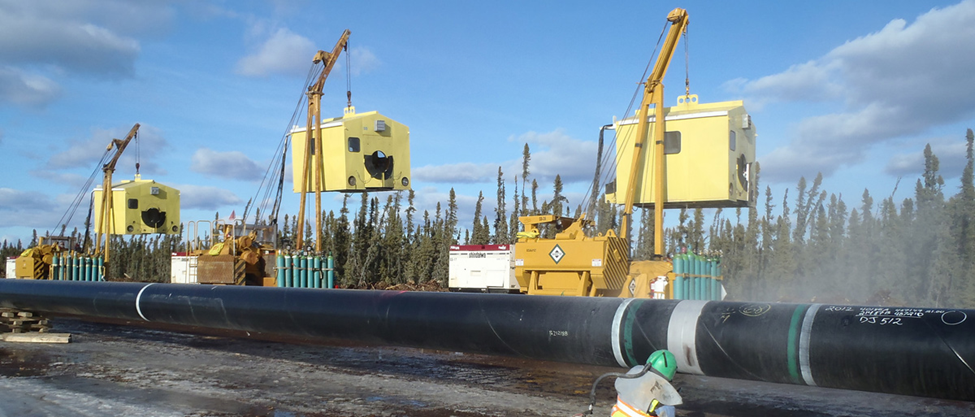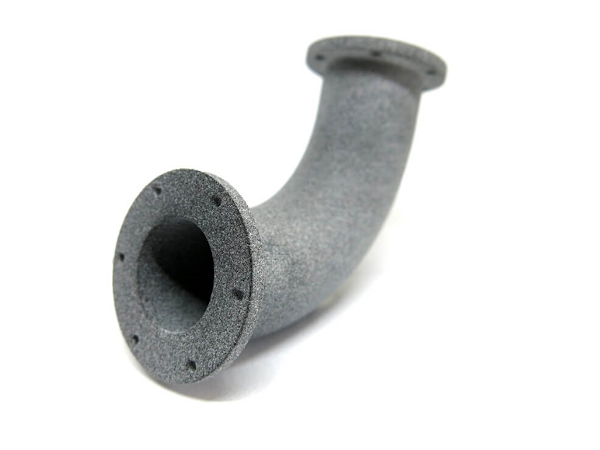
Charles R. Goulding and Peter Favata consider timely 3D printing applications that could help repair damaged piping.
Pipes are a major part of any city’s infrastructure as they are responsible for transporting things such as oil, gas and sewage transportation throughout the city. Pipe plumbing systems date back to ancient Rome circa 200 B.C.E. where they set up systems throughout the city. Sadly, the system was not maintained during the Roman civil wars, causing it to breakdown. It is thought that the pipes ended up contributing to lead poisoning throughout the city and may have contaminated harbor water and sealife within it.
In the wake of the recent catastrophic winter storm in Texas, there have been many issues with pipes bursting and leaving millions of people without water. That piping now requires repairs including insulation throughout the state. This is partly because the pipes in Texas were not rated for such cold temperatures, nor were they insulated, causing the freezing water inside to expand and burst. This has caused a massive overload of work for plumbers throughout the state, as well as a shortage of materials for repairs with some houses needed to be completely re-piped.
3D Printing
With plumbing supply stores experiencing long waits and bare shelves, 3D printing could be an important tool to get plumbers the equipment they need when they need it. Advancements in 3D printing materials such as PVC and metal make this possible.
3D printed pipe fittings are becoming popular among plumbers. One benefit of using additive manufacturing to produce pipe fittings is the ability to print onsite if need be. Another benefit of utilizing additive manufacturing is the ability to create highly customized fittings, allowing for the optimal fit for the job at hand. These capabilities would be greatly helpful in Texas right now.

Pipe couplings are also good candidates for additive manufacturing. Pipe couplings are an important piece to any plumbing job as they connect pipes between walls throughout a house. With 3D printing, a coupling of any shape can be created with threading that matches the connecting pipe. This level of design freedom makes the build-out of piping systems much easier.
3D printing and similar activities used for developing pipes, fittings and other plumbing products may be eligible for Research and Development (R&D) Tax Credits.
The Research & Development Tax Credit
Whether it’s used for creating and testing prototypes or for final production, 3D printing is a great indicator that R&D Credit eligible activities are taking place. Companies implementing this technology at any point should consider taking advantage of R&D Tax Credits.
Enacted in 1981, the now permanent Federal Research and Development Tax Credit allows a credit that typically ranges from 4%-7% of eligible spending for new and improved products and processes. Qualified research must meet the following four criteria:
- Must be technological in nature
- Must be a component of the taxpayer’s business
- Must represent R&D in the experimental sense and generally includes all such costs related to the development or improvement of a product or process
- Must eliminate uncertainty through a process of experimentation that considers one or more alternatives
Eligible costs include US employee wages, cost of supplies consumed in the R&D process, cost of pre-production testing, US contract research expenses, and certain costs associated with developing a patent.
On December 18, 2015, President Obama signed the PATH Act, making the R&D Tax Credit permanent. Beginning in 2016, the R&D credit can be used to offset Alternative Minimum tax for companies with revenue below $50MM and, startup businesses can obtain up to $250,000 per year in payroll tax cash rebates.
Conclusion
Presently, with the high demand for repairs across Texas, plumbers need a new way to produce pipes and pipe accessories. 3D printing could be the best move for getting people’s water running and lives back to normal after this natural disaster.
